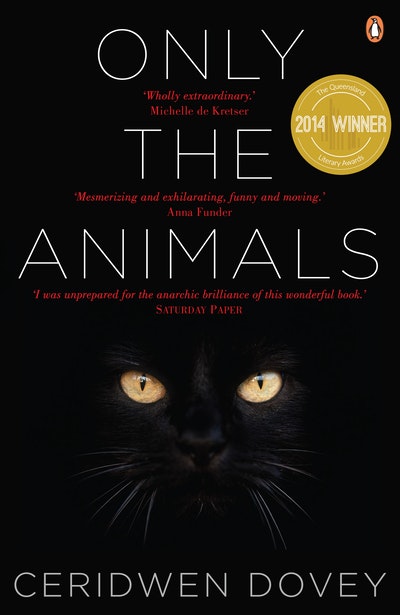Book clubs will see history from a different perspective in these short stories from Ceridwen Dovey.
In Ceridwen Dovey's Only the Animals, the souls of ten animals caught up in human conflicts over the last century tell their astonishing stories of life and death, sharing their view of humans at our brutal worst and our creative best.
Questions and discussion points:
- Consider the way in which each story addresses the quote from Boria Sax that gives the collection its title: ‘What does it mean to be human? Perhaps only the animals can know.’ (page 179)
- This book incorporates the ideas of a number of writers besides those named in it. Discuss the use of the work of as many of those as you recognise.
- ‘The Bones’ draws on several Henry Lawson pieces, along with a true incident, the massacre of blacks at Hospital Creek. When the camel protests his innocence with the comment, ‘I had only arrived a few years ago, how could I have done anything wrong?’ (page 11), does this reflect anything of modern Australia to you?
- Do any of the other stories set many decades ago encapsulate something essential about modern life, in your opinion?
- The cat comments of Colette that ‘she and I consider ourselves hybrids of a sort, never quite able to fit within the boundaries of our sex or species, always feeling we’re a smudgy, mongrel character’. (page 26) Discuss the value of this standpoint.
- In ‘Hundstage’, Himmler expresses a sentiment which the dog-narrator finds very beautiful (page 76, second paragraph). How did you respond on reading this scene? Does the dog’s blind loyalty to its master bring you to any greater empathy for those German people brainwashed during World War II?
- Discuss the portrayal of the experience of motherhood in this collection: Colette, for example, was ambivalent about it, Plath embraced it as part of her work, the dolphin had her own view. Does motherhood represent something wider in these stories, do you think? Is a parallel implied between the responsibility for life created and life tamed?
- The bears’ story is the only one told in the third person rather than the first: why do you think this is?
- Discuss the way in which these stories throw into relief the primal versus the civilised aspects of human beings.
- Only the Animals deftly avoids anthropomorphising, with two stories being deliberate exceptions to this: the mussel’s, with its characterisation of Kerouc, and the chimpanzee’s, in which the chimps are groomed to behave like humans. Do you think these two have particular points to make about animal–human connections?
- The dolphin wonders of humans, ‘Why do you sometimes treat other people as humans and sometimes as animals? And why do you sometimes treat creatures as animals and sometimes as humans?’ (page 206) What’s your response to this question?
- There’s a suggestion that these stories may have been solicited by an unseen curator – the dolphin reveals on page 204 that she was asked to write the story of her death. Did you have a sense of that while reading? If so, what did you make of it, and if not, did you wonder at how the stories came into being?
- Apart from those mentioned in the book summary above, what other questions do these stories raise for you?
- Do you think the two stories that bookend the collection, the camel’s and the parrot’s, serve a particular function?














